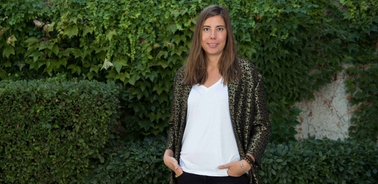- Home
- We Are Law School
- News
- Art In The Practice Of Reparations At The International Criminal Court And The Inter-american Court Of Human Rights
Art in the Practice of Reparations at the International Criminal Court and the Inter-American Court of Human Rights

Professor Marina Aksenova took part in the Workshop ‘Rethinking Reparations in International Law’ at Lauterpracht Centre in Cambridge where she spoke about “Art in the Practice of Reparations at the International Criminal Court and the Inter-American Court of Human Rights”.
The practice of the ICC is currently changing to accommodate alternative ways of delivering the message of international criminal law to the affected communities. The ICC’s recent reparations orders are early examples of this broader vision of justice.
Historically, the UN executive organs, such as the Security Council and the Secretary-General, were the primary promoters of reconciliation through international criminal law. International courts and tribunals largely supported this goal, but with some serious reservations. The recent practice of the ICC clearly demonstrates the link between reparations and the goal of reconciliation. In Lubanga – the case dealing with the recruitment of child soldiers – the judges expressly upheld the value of symbolic reparations.
In particular, the ICC ruled that rehabilitation measures ought to include the means of addressing the shame that child victims may feel and may take forms of ‘commemorations and tributes’. Such measures can only be implemented through creative means and their specific form is currently debated at the ICC. One of the vehicles through which art finds its way into the practice of the ICC is, therefore, the practice of ordering symbolic reparations.
The IACtHR has a more established and more elaborate practice of symbolic reparations. Throughout the last fifteen years, the IACtHR has been ordering the construction of monuments, churches and parks as a form of reparation to commemorate traumatic events, such as the massacre by the Guatemalan Army of the indigenous Mayan people or the enforced disappearance of children in El Salvador perpetrated by the armed forces in the course of counter-insurgency operations. The reception of these measures has been somewhat mixed, however. At times, the respondent states displayed significant delays in the construction of monuments. Other times, the segments of the local population expressed negative sentiment towards the symbolic measure.
Art is a useful communication tool in translating legal findings into the language accessible to a wider community. In particular, art has the capacity to promote the goal of reconciliation, which is one of the goals of reparations both in the field of international criminal law and international human rights law. The following section elaborates on the goal of reconciliation and its vital importance for the discipline of international law. While international justice is tasked with contributing to this weighty goal, there is a clear gap in knowledge when it comes to developing the means of facilitating it. The same section dwells on the role of art in promoting the goal of reconciliation. Section three of this paper focuses more specifically on the practice of reparations ordered by the ICC and the IACtHR. Among different modalities of reparations available in both fields, symbolic reparations seem to align most accurately with the broader goal of reconciliation. Symbolic reparations by definition acquire their physical manifestation (in a tangible or a non-tangible manner) through certain creative expression.
By: Marina Aksenova, Specialized in international criminal and comparative criminal law
Follow her on Twitter: @marina_aksenov